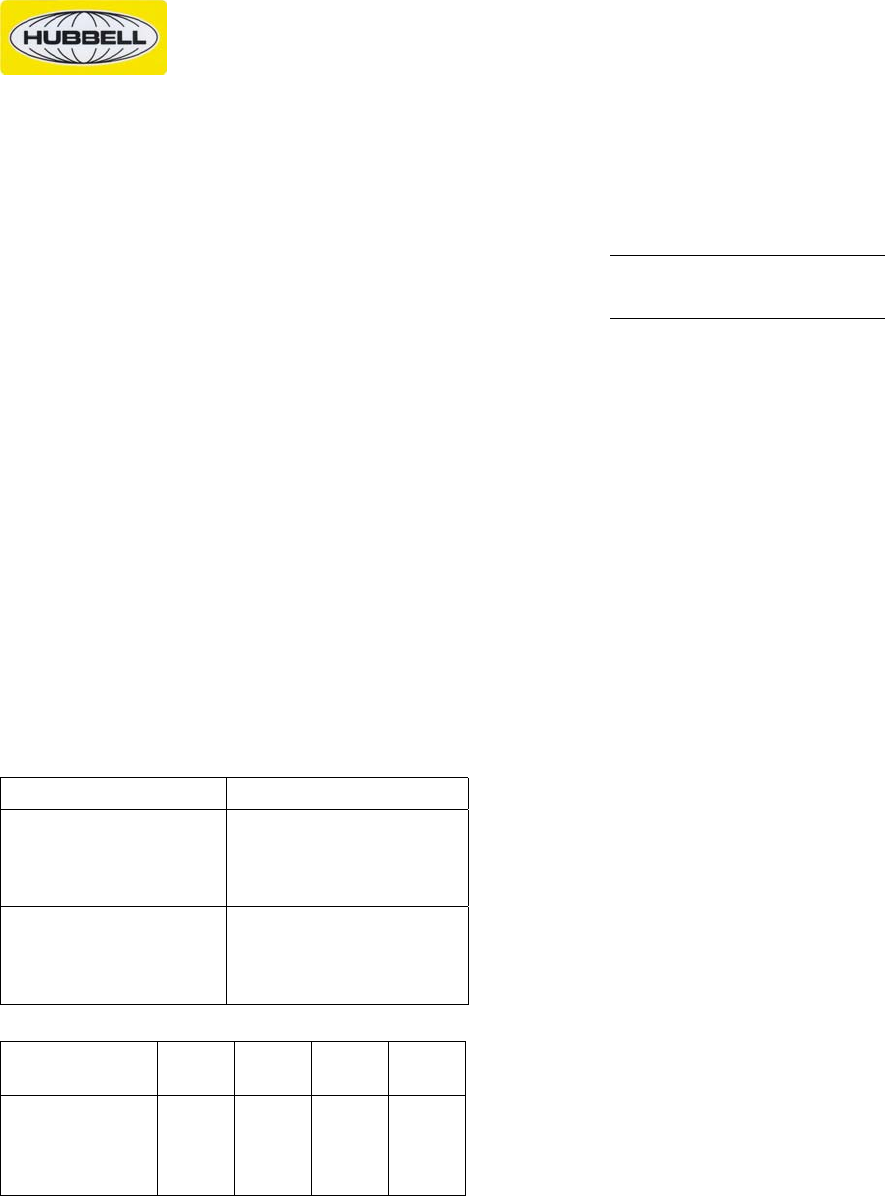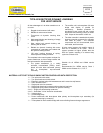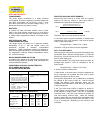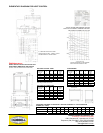
APPLICATION DATA
TRANSFORMER
The power supply transformer is a totally enclosed
nonventilated, air-cooled, separately mounted transformer
with 480V, three-phase, 60 Hz primary; it has 2—2½%
taps above and below the nominal voltage rating. A 3-
phase wye secondary connection is used.
RECTIFIER
A 3-phase full wave connected rectifier circuit is used.
Each of the three phases contains two or more silicon
diodes, protective fuses and neon fuse failure indicators.
A voltage surge suppression network is included on the
rectifier.
RECTIFIER PANEL AND
TRANSFORMER RATINGS
The ratings shown are based on a maximum ambient
temperature of 40° C with the rectifier panel and
transformer supplied in standard, nonventilated
enclosures. Higher temperature ratings are attained by
either de-rating the equipment or by providing ventilation.
For applications involving ambient temperatures above
40°, consult the factory.
MOTOR HORSEPOWER SELECTION
In addition to the weight of the load being hoisted and the
desired hoisting speed, the hoisting cycle also affects the
motor horsepower selection.
COMPARISON OF BASIC CHARACTERISTICS
OF DC SERIES MOTOR AND
AC WOUND ROTOR MOTORS
DC SERIES MOTOR AC WOUND ROTOR MOTOR
• No load speed is approximately 2
or 3 times full load speed.
• When used with dynamic lowering
controller the motor can lower
rated load at a speed much greater
than the rated load-hoisting speed.
• Maximum motor speed limited to near
synchronous speed for no load and
full load.
• Maximum motor speed increases
in proportion to increase in line
voltage.
• Increased speeds result in
increased horsepower without
change in motor size.
• Maximum motor speed not affected by
increase in line voltage.
CRANE PERFORMANCE COMPARISON*
Control Type
Standard
AC
Standard
230V DC
Standard
with 300V
DC
Optional
with 360V
DC
Hoist full load
Lower full load
Hoist empty load
Lower empty load
Average
96%
102%
99%
100%
99%
100%
200%
212%
140%
149%
130%
220%
250%
155%
175%
155%
240%
252%
180%
198%
* 100% speed = ac motor synchronous speed or dc motor rated speed at 230 volts dc.
90% efficiency is assumed.
SPECIFIED HOISTING SPEED EXAMPLE
Assume the hoist must lift a 50-ton load at a specific
speed of 45 feet per minute, a crane hoist motor is
selected on the basis of the following formula:
Payload & Hook Block Weight in Lbs. x
Desired Full load Hoisting Speed in fpm
HP =
33,000 x Crane Hoist Efficiency
100,000 Lbs. x 50 fpm
HP =
33,000 x .90
= 168 hp
Therefore, 200-hp ac motor would be required.
If a dc series motor of equal horsepower is selected and
used with the Type 4015 controller, it will hoist full load at
130% of rated motor speed:
HP (@ 230 vdc) = 168 hp/1.30 = 129 hp
Therefore, a 135-hp dc motor would be applicable.
DUTY CYCLE EXAMPLE
Assume that this same hoist must meet the following duty
cycle rather than a specific hoisting speed: (1) lower the
empty hook; (2) hoist full load or less; (3) lower full load or
less; (4) hoist empty hook.
Since the standard Type 4015 hoist control provides an
average hook speed of 175% as compared to the ac
motor control:
HP (@ 230 vdc) = 168 hp/1.75 = 96 hp.
A 100-hp dc motor could be used.
In other words, a dc series motor of equal horsepower as
its ac counterpart will complete the hoist cycle in about
half the time required by the ac motor.
Even greater performance can be obtained by increasing
the voltage to the motor to 360V dc. With the higher
voltage, the hoisting cycle described above can be
competed 198% faster than it could with an ac motor drive
of equal horsepower.
If the Type 4015 hoist control is applied on bucket or
magnet cranes, the minimum load consists of the weight
of the magnet or empty bucket. Only two (2) operating
conditions exist. The hoist cycle consists of hoisting full
load and lowering minimum load. When the average
speed is determined, the required 230V horsepower rating
for the dc series motor will usually vary from 65% to 70%
of its ac counter-part, depending on the minimum load
conditions.





